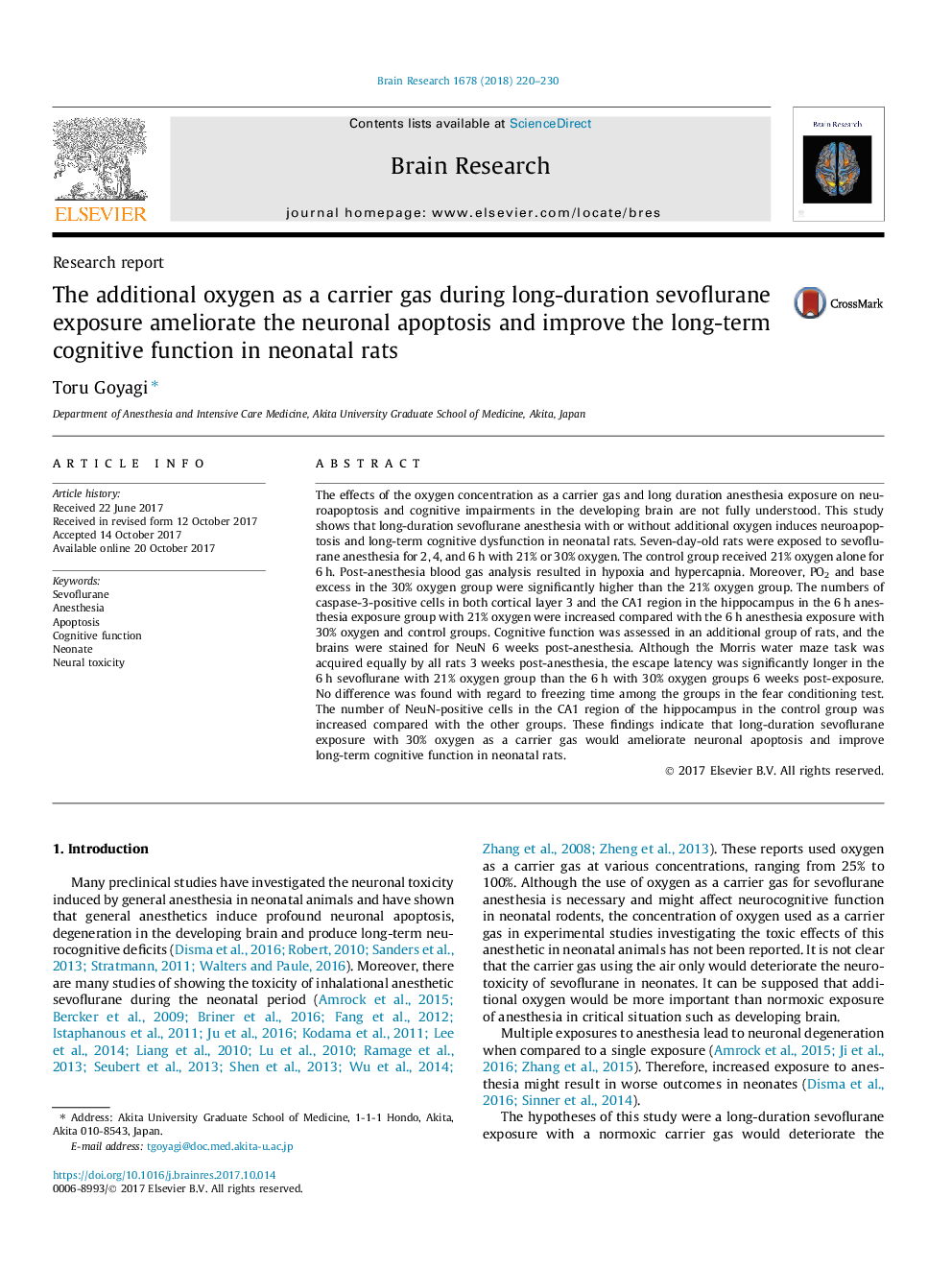| Article ID | Journal | Published Year | Pages | File Type |
|---|---|---|---|---|
| 8839960 | Brain Research | 2018 | 11 Pages |
Abstract
The effects of the oxygen concentration as a carrier gas and long duration anesthesia exposure on neuroapoptosis and cognitive impairments in the developing brain are not fully understood. This study shows that long-duration sevoflurane anesthesia with or without additional oxygen induces neuroapoptosis and long-term cognitive dysfunction in neonatal rats. Seven-day-old rats were exposed to sevoflurane anesthesia for 2, 4, and 6â¯h with 21% or 30% oxygen. The control group received 21% oxygen alone for 6â¯h. Post-anesthesia blood gas analysis resulted in hypoxia and hypercapnia. Moreover, PO2 and base excess in the 30% oxygen group were significantly higher than the 21% oxygen group. The numbers of caspase-3-positive cells in both cortical layer 3 and the CA1 region in the hippocampus in the 6â¯h anesthesia exposure group with 21% oxygen were increased compared with the 6 h anesthesia exposure with 30% oxygen and control groups. Cognitive function was assessed in an additional group of rats, and the brains were stained for NeuN 6 weeks post-anesthesia. Although the Morris water maze task was acquired equally by all rats 3 weeks post-anesthesia, the escape latency was significantly longer in the 6â¯h sevoflurane with 21% oxygen group than the 6â¯h with 30% oxygen groups 6 weeks post-exposure. No difference was found with regard to freezing time among the groups in the fear conditioning test. The number of NeuN-positive cells in the CA1 region of the hippocampus in the control group was increased compared with the other groups. These findings indicate that long-duration sevoflurane exposure with 30% oxygen as a carrier gas would ameliorate neuronal apoptosis and improve long-term cognitive function in neonatal rats.
Related Topics
Life Sciences
Neuroscience
Neuroscience (General)
Authors
Toru Goyagi,
